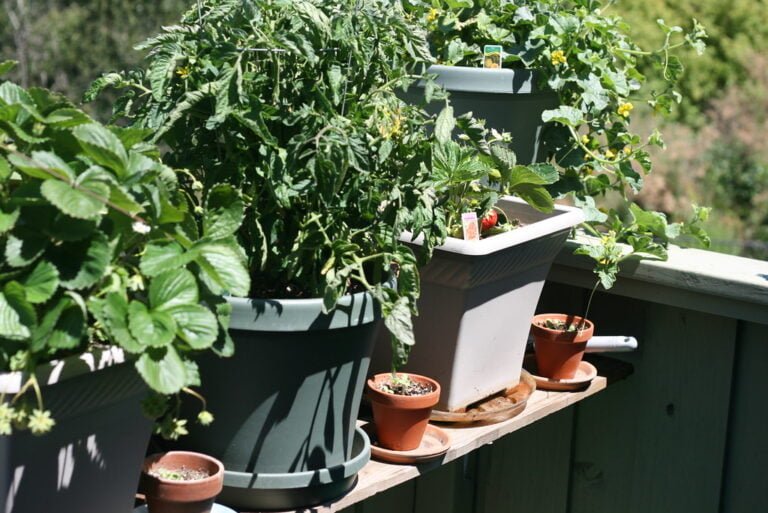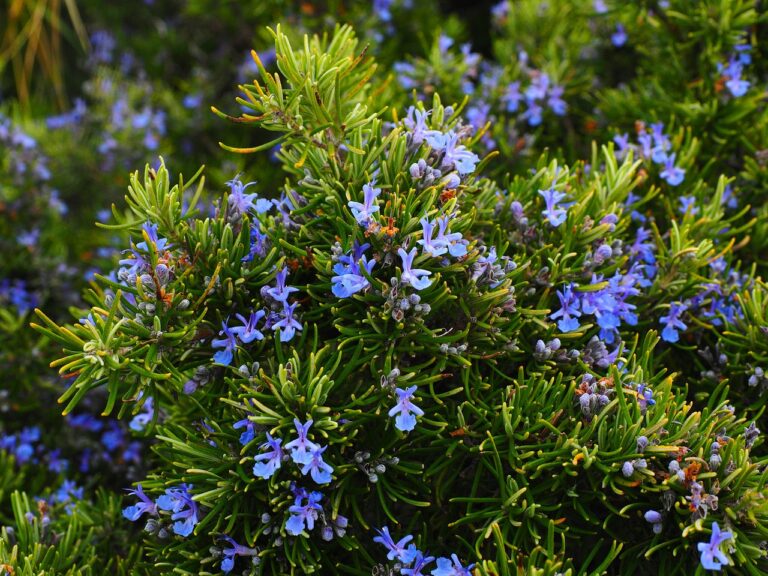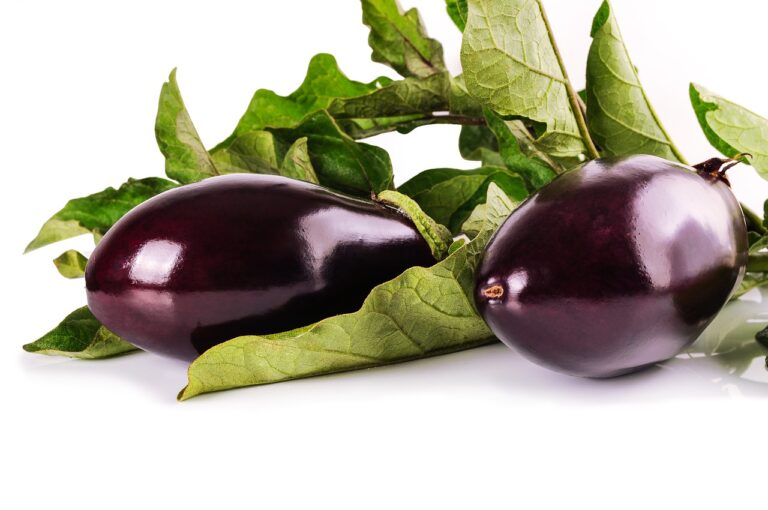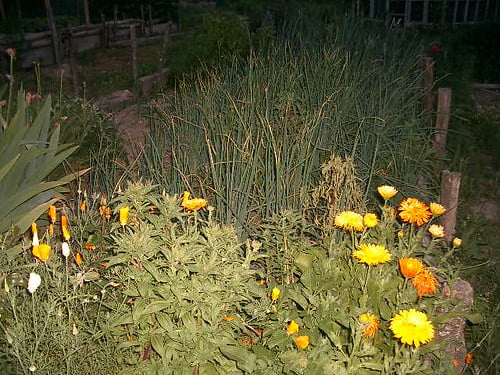Understanding the Basics of Companion Planting for Beetroot
Are you interested in maximizing the growth and flavor of your beetroot plants? Discover the secrets of companion planting to enhance your beetroot's success. In this article, we'll explore the ideal neighbors for your beetroot, from leafy greens to onions and garlic. Learn how marigolds, radishes, and nasturtiums can play a crucial role in deterring pests and promoting healthy growth. With these practical tips, you'll be able to create a thriving beetroot garden that serves you and your taste buds.
Planting Beetroot With Complementary Herbs
If you want to optimize the growth and flavor of your beetroot, you should consider planting it with complementary herbs. Companion planting is a gardening technique that involves growing different plants together to benefit each other. When it comes to beetroot, there are several herbs that can be great companions. One such herb is basil. Planting basil near your beetroot can enhance its flavor and repel pests like aphids and spider mites. Another herb that goes well with beetroot is dill. Dill attracts beneficial insects like ladybugs, which can help control beetles that may harm your beetroot plants. Additionally, planting chives alongside your beetroot can improve its growth and deter pests. These herbs not only add flavor to your dishes but also promote the health and productivity of your beetroot plants. So, consider planting them together for a bountiful harvest.
Beetroot's Ideal Neighbors in the Garden
To optimize the growth and flavor of your beetroot, it is important to know which plants make ideal neighbors in the garden. By choosing the right companions, you can enhance the health and yield of your beetroot crop. One excellent companion for beetroot is onions. Onions repel pests and help deter diseases that can affect beetroot. Additionally, onions can improve the flavor of beetroot when harvested together. Another great companion for beetroot is lettuce. Lettuce provides shade to the beetroot, keeping the soil cool and moist. This is especially beneficial during hot summer months. Lastly, beetroot and radishes are excellent neighbors. Radishes help break up the soil, making it easier for beetroot to grow deep roots. They also act as a trap crop for pests, diverting them away from the beetroot. By planting these ideal neighbors alongside your beetroot, you can ensure a thriving and bountiful garden.
The Benefits of Interplanting Beetroot and Marigolds
Interplanting beetroot and marigolds offers several benefits to enhance the growth and health of your garden. Marigolds are known for their ability to repel pests and attract beneficial insects. By planting marigolds alongside your beetroot, you can naturally control pests such as nematodes, aphids, and beetles, reducing the need for chemical pesticides. Marigolds also release chemicals into the soil that deter harmful root-knot nematodes, which can damage the roots of your beetroot. Additionally, the vibrant flowers of marigolds can attract pollinators like bees and butterflies, promoting better pollination for your beetroot plants. The dense foliage of marigolds also acts as a natural mulch, helping to suppress weed growth and conserve soil moisture. Interplanting beetroot and marigolds is a simple and effective way to improve the overall health and productivity of your garden.
Pairing Beetroot With Leafy Greens for Maximum Growth
When pairing beetroot with leafy greens, you can maximize their growth by strategically planting them together in your garden. This method of companion planting has numerous benefits for both crops. First, leafy greens provide shade to beetroot, protecting their roots from excessive heat and preventing them from bolting. Additionally, the dense foliage of leafy greens helps to suppress weed growth around the beetroot plants, reducing competition for nutrients and water. Moreover, the two crops have different root depths, which allows them to access different layers of soil and maximize nutrient uptake. Leafy greens also attract beneficial insects like ladybugs and lacewings, which help control pests that may harm the beetroot. By pairing beetroot with leafy greens, you can create a mutually beneficial environment that promotes healthy growth and a bountiful harvest.
Enhancing Beetroot's Flavor With Onions and Garlic
Pairing beetroot with onions and garlic can greatly enhance its flavor, as these aromatic vegetables are known to impart a delicious and savory taste to the beetroot. Onions and garlic contain natural compounds that add depth and complexity to the flavor profile of beetroot. The pungent and slightly sweet taste of onions complements the earthy sweetness of beetroot, creating a perfect balance of flavors. Garlic, on the other hand, adds a subtle hint of spiciness and a rich umami flavor that intensifies the overall taste of beetroot. When cooked together, these vegetables release their flavors, blending harmoniously with the beetroot. To enhance the flavor, you can sauté onions and garlic until they are soft and translucent before adding them to your beetroot dishes. Whether you're roasting, steaming, or grilling beetroot, adding onions and garlic will elevate its taste and make it a delightful addition to any meal.
Using Carrots as a Companion Plant for Beetroot
To further enhance the flavor and promote healthy growth, you can also consider using carrots as a companion plant for your beetroot. Carrots and beetroot make excellent companions in the garden because they have similar soil requirements and their root systems grow at different depths, allowing them to coexist without competing for nutrients. Carrots are known to improve the flavor of beetroot by reducing bitterness and enhancing its natural sweetness. Additionally, beetroot and carrots can help each other deter pests. Carrots release chemicals that repel pests like aphids and beetles, while beetroot acts as a natural deterrent for carrot flies. When planting them together, make sure to give them enough space to grow and avoid overcrowding. By pairing these two vegetables, you can create a thriving garden and enjoy the benefits of their harmonious relationship.
How Radishes Can Help Beetroot Thrive
Radishes play a crucial role in helping your beetroot thrive in the garden. They are excellent companions because they have a symbiotic relationship that benefits both plants. The radishes help to deter pests, such as beetles, that can attack your beetroot. Their strong scent acts as a natural deterrent, keeping these pests away. Additionally, radishes have a fast growth rate, which helps to break up the soil and improve its structure. This benefits the beetroot by allowing better water infiltration and root development. Furthermore, radishes are known for their ability to accumulate nutrients like potassium, phosphorus, and calcium. As they decompose, these nutrients are released into the soil, providing a nutrient-rich environment for your beetroot. By planting radishes alongside your beetroot, you can enhance its growth and overall health.
The Role of Nasturtiums in Companion Planting for Beetroot
One important plant to consider when companion planting with beetroot is the nasturtium. Nasturtiums play a crucial role in promoting the growth and health of beetroot plants. These vibrant flowers not only add beauty to your garden but also serve as natural pest deterrents. Nasturtiums release a strong scent that repels harmful insects like aphids, beetles, and whiteflies, which are known to attack beetroot plants. By planting nasturtiums alongside your beetroot, you create a protective barrier that helps keep these pests at bay. Additionally, nasturtiums attract beneficial insects like ladybugs and hoverflies, which feed on harmful insects and help maintain a healthy ecosystem. This symbiotic relationship between nasturtiums and beetroot ensures optimal growth and protection for your beetroot plants, making them a valuable addition to your companion planting strategy.
Deter Pests With Companion Plants for Beetroot
Planting companion plants alongside your beetroot is an effective strategy for deterring pests. By choosing the right companions, you can create a natural barrier that repels unwanted insects and reduces the risk of infestation. One popular companion plant for beetroot is marigold. The strong scent of marigold flowers acts as a natural repellent for pests like aphids and nematodes. Additionally, marigolds attract beneficial insects such as ladybugs and lacewings, which feed on harmful pests. Another beneficial companion plant for beetroot is garlic. Its strong odor repels insects like aphids, beetles, and spider mites. Garlic also has antifungal properties that help protect your beetroot from diseases. By incorporating these companion plants into your beetroot garden, you can create a pest-resistant environment and ensure healthy, thriving plants.
Crop Rotation Strategies for Successful Beetroot Planting
To ensure the success of your beetroot planting, implementing effective crop rotation strategies is crucial. Crop rotation is the practice of growing different crops in a specific sequence on a piece of land over several seasons. It helps prevent the buildup of pests and diseases, improves soil fertility, and reduces the need for chemical inputs. When planning your crop rotation strategy for beetroot, it is important to consider the previous crops grown in the same area. Avoid planting beetroot after other root vegetables, as they may share pests and diseases. Instead, rotate beetroot with crops from different plant families, such as legumes or leafy greens. This will help break the pest and disease cycle and promote healthy beetroot growth. Remember to plan your crop rotation on a long-term basis, ensuring that each crop has its designated spot in the rotation cycle. By implementing effective crop rotation strategies, you can maximize the success of your beetroot planting and enjoy a bountiful harvest.
Conclusion
To maximize the growth and flavor of your beetroot, companion planting is a smart approach. By planting beetroot with complementary herbs like marigolds, leafy greens, onions, garlic, radishes, and nasturtiums, you can enhance their growth and deter pests. Additionally, implementing crop rotation strategies can ensure successful beetroot planting year after year. So, don't forget to consider these companion planting techniques when planning your beetroot garden for a bountiful and flavorful harvest.






